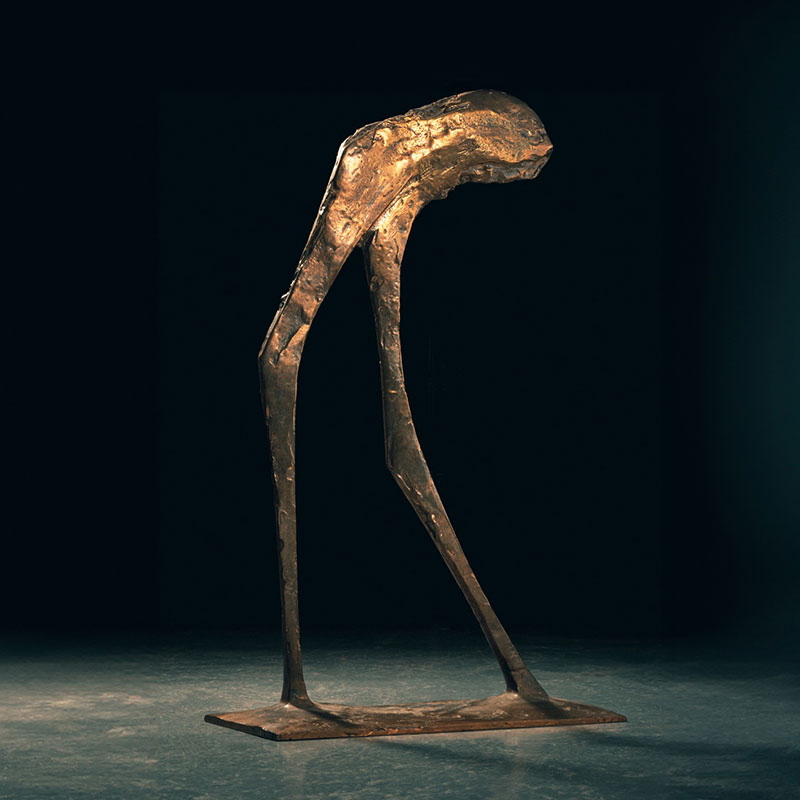How Much is Contemporary Art Worth?
The Contemporary art market invariably shifts focus
25/03/2024
When contemplating the worth of these artworks, it is important to understand what is considered Contemporary Art and how it is distinguished. Broadly speaking, Contemporary Art refers to pieces produced from the 1940s until present day, the value is determined by the historical importance of the artist as well as the actual artwork.
Contemporary Art exists to challenge established norms and stimulate thought provoking discussions using any media or combination thereof. The message conveyed from the work is far more crucial than the proficiency of technique, the very lack of organised uniform ideologies is a distinguishing feature. As society evolves to become more inclusive and diverse, so too are the artists belonging to this school, recognised for their personal characteristics, as well as social and political agendas, they are mindful of current issues and rely on critical thinking to reconceptualise materials in an inventive new way. Contemporary artwork is characterised by diversity: diversity of material, of form, of subject matter, and even time periods.
While Modern Art encompasses a large variety of innovative new techniques and abstract representations symbolic of the significant modernisation during this period, Contemporary Art focuses on redefining previously original concepts and ideas to create a message that may raise awareness or certainly encourage dialogue.
Consider Damien Hirst, who became famous for his display tanks featuring dead animals, sometimes dissected, and preserved in formaldehyde; or Banksy, the satirical street artist whose works portray political and social commentary throughout the world. Then there is Tracey Emin, renowned for her confessional installation pieces such as “My Bed”, consisting of her own bed where she spent several weeks drinking, smoking, eating, sleeping following a bad break up. None of these artists conform to antiquated traditional methods, indeed the message these artists are conveying takes precedent over aesthetics.
“If I am asked to describe what I do with my sculpture I reply that I look back at a previous age and render it in an impressionistic but contemporary manner.” – Philip Jackson.
Philip Jackson is a celebrated contemporary artist, known for his bronze sculptures depicting figures. As Royal sculptor to Queen Elizabeth II, he has several commissioned works on display throughout the UK, one of the most famous being the Bomber Command Memorial in London’s Green Park. His work never fails to move people, indeed his smaller gallery figures, inspired by Venice and the Maschera Nobile, are sought after by collectors throughout the world. In January, Dawsons had the pleasure of offering three of Jackson’s limited editions cast bronzes from a deceased estate, they went on to fetch a remarkable £15,500.
Born in 1930, Dame Elisabeth Frink’s contributions to sculpture and printmaking are revered and collected by many enthusiasts. Fascinated by materials and processes, Frink’s work depicts figurative shapes to express humanitarian concerns. One of her most celebrated public commissions is “Risen Christ”, which was installed at Liverpool Cathedral in 1993, a week before she passed away from throat cancer.
The late Jean-Michel Basquiat has achieved phenomenal success at auction in the last decade, achieving a nine-figure hammer price in 2017, breaking the record for the highest-grossing painting by a black artist. His work provided social commentary on the black community in America and criticized the hierarchy of power and inherent racism within society.
Other Contemporary artists worth mentioning include, Ai Weiwei, a Chinese activist who raises awareness about political and social issues through his sculptures, photographs, and public works; and Grayson Perry, a ceramicist and tapestry weaver, partial to cross-dressing and his alter ego Claire, he is famous for his conventionally formed vessels with harshly contrasting decoration.
The Contemporary art market invariably shifts focus, and in an age where sustainability and diversity have never been more important, Contemporary art is here to stay. The worth of a new emerging artist against established mainstream names such as Andy Warhol or Lucian Freud will vary greatly, but the demand for certain artists will undoubtably adapt. As society continues to change and grow, so too will the messages and intention of artists.
Read more
Is Contemporary Art Important?
Are you considering selling any Contemporary Art?
With a huge global audience, Dawsons can achieve the best prices.
Please get in touch with an expert valuer today for sales advice, we would be delighted to help.
-Scottish-Don-Ottavio-,-a-large-limited-edition-cast-bronze-figure.jpg)
.jpg)
-Study-of-the-Artist-s-dog-or-Lying-Down-Dog.jpg)
